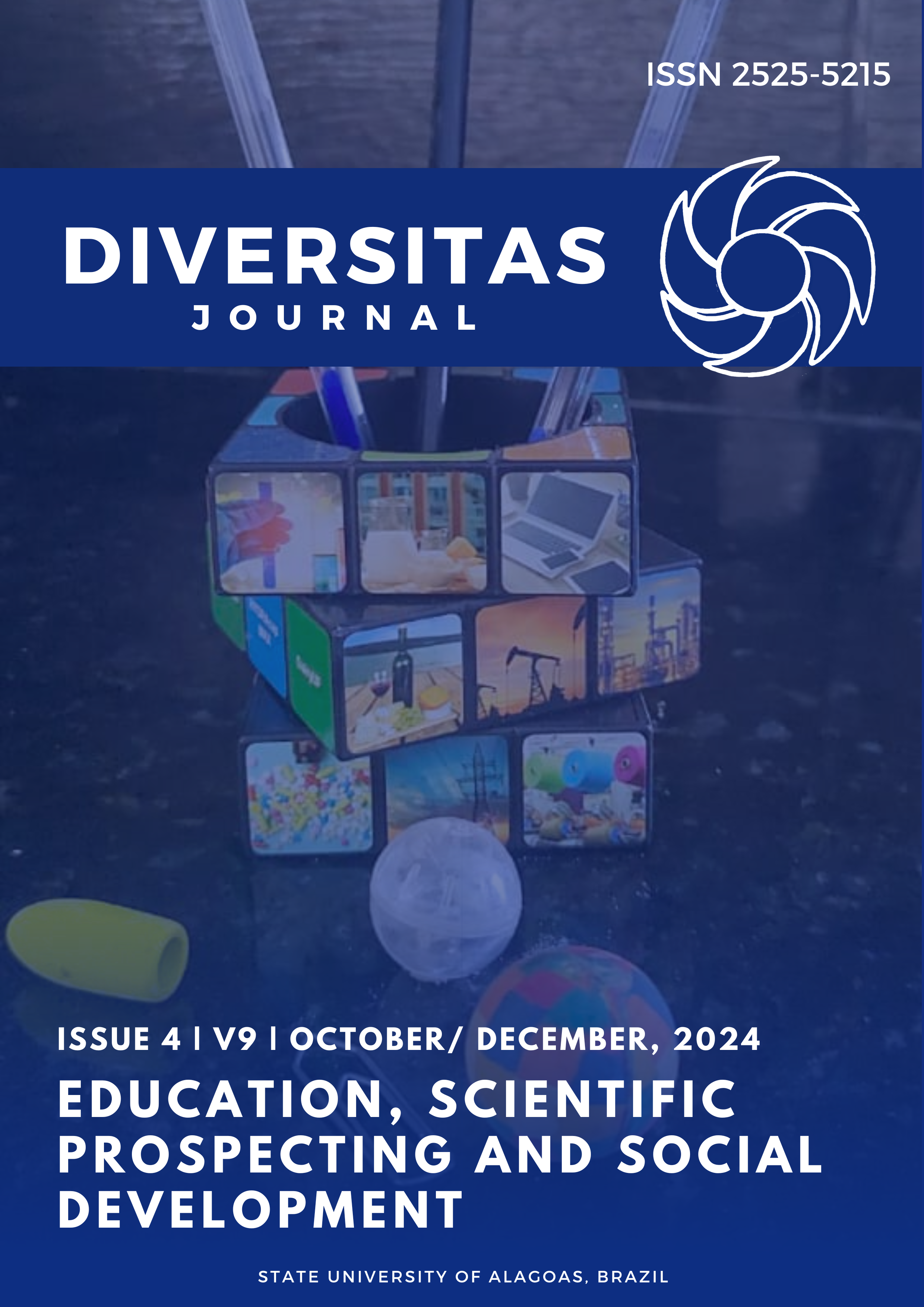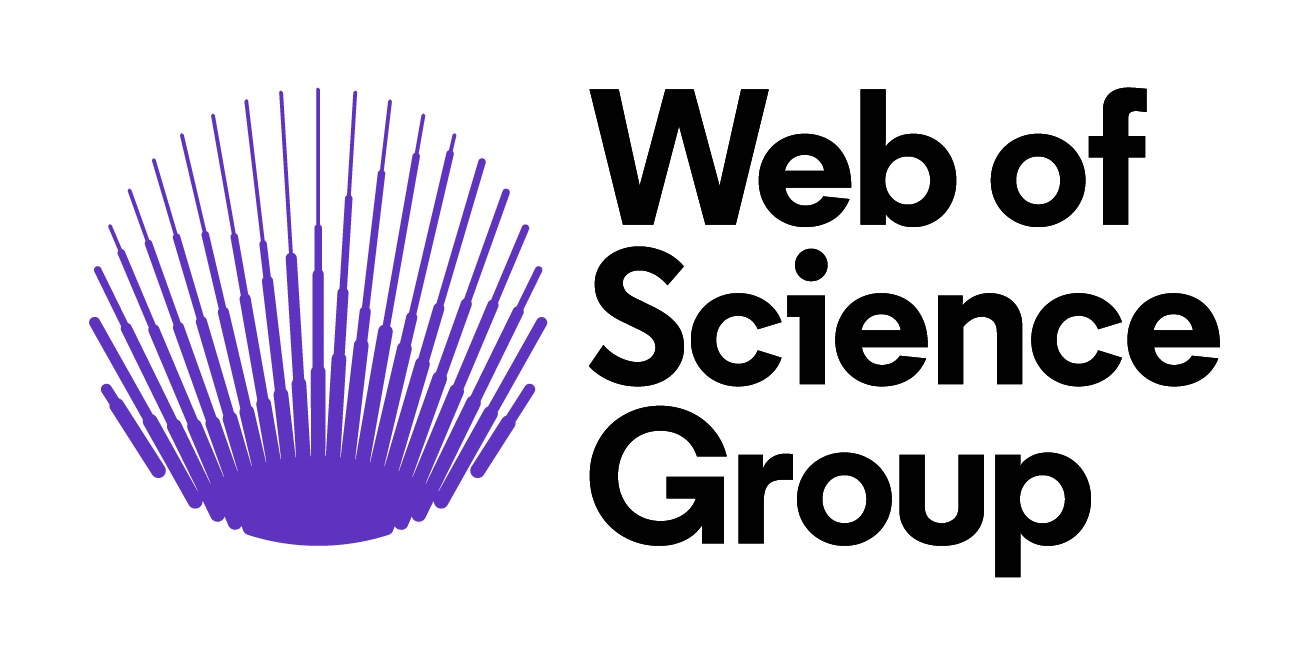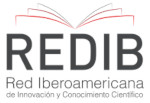Desenvolvimento e validação de pacote de aprendizagem em précálculo
DOI:
https://doi.org/10.48017/dj.v9i4.3201Palavras-chave:
Materiais de aprendizagem, Módulos de instuções, Précalculo, STEMResumo
O desenvolvimento de materiais instrucionais é visto como uma meta educacional vital para atender às necessidades de todos os alunos e garantir uma educação de qualidade. À medida que os paradigmas educacionais evoluem, há uma ênfase crescente na criação de recursos que envolvam, capacitem e atendam ao aprendizado individualizado dos alunos. O estudo se esforçou para desenvolver e avaliar módulos em précálculo para alunos STEM do 11º ano. O estudo empregou o design de pesquisa e desenvolvimento (P&D) e o método de pesquisa descritiva, utilizando a folha de classificação de avaliação para recursos impressos adotada pelo Departamento de Educação. O método aprovado-não aprovado foi usado para determinar a extensão da validade dos módulos desenvolvidos. Cinco especialistas na área de matemática e linguagem avaliaram o material de aprendizagem, e os dados foram analisados usando contagem de frequência, média e soma. O material de aprendizagem recém-desenvolvido em pré-cálculo envolve onze (11) módulos. A apresentação dos tópicos abrange o modelo instrucional 5E para atingir os resultados de aprendizagem almejados com base nas Competências de Aprendizagem Mais Essenciais (MELCs). Como resultado, os Módulos em Pré-cálculo para alunos STEM do 11º ano exibiram substância notável e atenderam aos padrões e requisitos do processo de avaliação. Os módulos desenvolvidos aumentam os recursos de aprendizagem existentes usados para ensinar a disciplina no Ensino Médio.
Métricas
Referências
Abdelmohsen, M. (2020). The Development and Validation of a Module on Enhancing Students' Critical Thinking, Collaboration and Writing Skills. SAR Journal - Science and Research. 3. 166-177. 10.18421/SAR34-04.
Auditor, E., & Naval, D. J. (2014). Development and validation of tenth grade physics modules based on selected least mastered competencies. International Journal of Education and Research, 2(12), 145-152.
Babaali, P. & Gonzalez, L. (2015) A quantitative analysis of the relationship between an online homework system and student achievement in pre-calculus, International Journal of Mathematical Education in Science and Technology, 46:5, 687-699, DOI: 10.1080/0020739X.2014.997318
Bhagi, S. (2020). Exploring the Impact of a Corequisite Model on Academic Performance in Precalculus: Who Benefits When?. University of the Pacific, Dissertation. https://scholarlycommons.pacific.edu/uop_etds/3718
Bressoud, D., et al. (2016). Teaching and Learning of Calculus. ICME-13 Topical Surveys. https://doi.org/10.1007/978-3-319-32975-8_1
Bybee, R. W. (2009). The BSCS 5E instructional model and 21st-century skills: A commissioned paper prepared for a workshop on exploring the intersection of science education and the development of 21st-century skills. https://sites.nationalacademies. org/cs/groups/dbassesite/documents/webpage/dbasse_073327.pdf
Cadorna, E.A., Garnace, J.B., Molina, J.T., Domondon, C.S., and Galangco, J.E., (2023). Development Of Technostress Scale For Filipino Students Using Exploratory And Confirmatory Factor Analysis. Journal of Namibian Studies. Vol. 33. https://namibian-studies.com/index.php/JNS/article/view/3223
Cadorna, E.A., Riboroso, R.A., Llagas Jr, R.M., and Taban, J.G., (2023). Development of Worktext in Mathematics in the Modern World. Journal of Namibian Studies. Vol. 33. https://namibian-studies.com/index.php/JNS/article/view/2517
Cadorna, E. A., Taban, J. G., & Gavino, M. (2016). Pathological fear of students in mathematics: Gender differences. Asia Pacific Journal of Social and Behavioral Sciences, 13(16), 1-13.
Camara, J. (2016). A Validated Module in Biological Science for College Students in the Philippines. Southeast Asian Journal of Science and Technology, 1(1), 65-70. Retrieved from https://sajst.org/online/index.php/sajst/article/view/49
Canaria, M. J. C., Yango, A. R., & Bautista, S. C. (2024). Information Literacy Instructions, Digital Resource Integration, and Students’ Academic Success. Diversitas Journal, 9(3). https://doi.org/10.48017/dj.v9i3.3021
Cerbito, A. F. (2020). Comparative analysis of Mathematics Proficiency and Attitudes toward Mathematics of Senior High School student. International Journal of Scientific and Research Publications, 10(05), 211–222. https://doi.org/10.29322/ijsrp.10.05.2020.p10125
Cirillo, M., LaRochelle, R., Arbaugh, F. & Bieda, K.N. (2020). An Innovative Early Field Experience for Preservice Secondary Teachers: Early Results from Shifting to an Online Model. Journal of Technology and Teacher Education, 28(2), 353-363. Waynesville, NC USA: Society for Information Technology & Teacher Education. Retrieved November 26, 2022 from https://www.learntechlib.org/primary/p/216305/.
Collins, B. V. C. (2019) Flipping the precalculus classroom, International Journal of Mathematical Education in Science and Technology, 50:5, 728-746, DOI: 10.1080/0020739X.2018.1535098
Cooper, T. E., Bailey, B., & Briggs, K. S. (2015). Gender Differences in Achievement in an Inquiry-Based Learning Precalculus Course. International Electronic Journal of Mathematics Education, 10(2), 97-110. https://doi.org/10.29333/iejme/294
Creswell, J. W., & Creswell, J. D. (2018). Research Design Qualitative, Quantitative, and Mixed Methods Approaches. Sage, Los Angeles.
Domondon, C., Corpuz, M. J., Carranza, M., Moroki, I., Ching, F., & Elipane, L. (2024). Lesson Study Reflections: Enhancing Ratio and Proportion Instruction in a Philippine School Setting. Diversitas Journal, 9. https://doi.org/10.48017/dj.v9i1_Special.2834
Domondon, C.S., Pardo, C.G. & Rin, E.T. (2022). Analysis of Difficulties of Students in Learning Calculus. Science International (Lahore), 34(6),1-4. http://www.sciint.com/pdf/638066898447788849.pdf
Effiong, O. E., & Igiri, C. E. (2015). Impact of instructional materials in teaching and learning of biology in senior secondary schools in Yakurr LG A. International letters of Social and humanistic sciences, 62, 27-33.
El Gaidi, K. and Ekholm, T. (2015). Contextualizing Calculus with Everyday Examples to enhance Conceptual Learning. American Society for Engineering Education, 22nd Conference, ID # 12007. Available from http://www.asee.org
Estonanto, A. J. J. (2017). Math anxiety and academic performance in pre-Calculus of selected senior high school in Sorsogon State College. Journal of Higher Education Research Disciplines, 2(2).
Feldman, A., & Bullock, D., & Callahan, J. (2012, June), Using Online Assessment and Practice to Achieve Better Retention and Placement in Precalculus and Calculus Paper presented at 2012 ASEE Annual Conference & Exposition, San Antonio, Texas. 10.18260/1-2--22190
Fulton, K. P. (2012). 10 Reasons to Flip. Phi Delta Kappan, 94(2), 20–24. https://doi.org/10.1177/003172171209400205
Galangco, J. (2023). Path Model of Mathematics Achievement in Senior High School. Journal of Research in Mathematics Education, 12(3), pp. 246-264. http://dx.doi.org/10.17583/redimat.12756
Golnabi, A. H., & Murray, E. (2019). How Precalculus Course Coordination Can Impact Students' Academic Performance.. Journal of higher education theory and practice, 21 (5). Retrieved from https://par.nsf.gov/biblio/10295273.
Gustiani, S. (2019). Research and development (R&D) method as a model design in educational research and its alternatives. Holistics (Hospitality and Linguistics): Jurnal Ilmiah Bahasa Inggris, 11(2)., 12-22
Jaudinez, A. S. (2019). Teaching Senior High School Mathematics: Problems and Interventions. Pedagogical Research, 4(2). https://doi.org/10.29333/pr/5779
Jones, M. G. & Lanaghan, S. (2021). Building and Sustaining Success in Precalculus: A Multi-Pronged Approach, PRIMUS, 31:9, 962-974, DOI: 10.1080/10511970.2020.1799456
Limon, M. R., & Vallente, J. P. C. (2016). Module Development in Home and Family Living for College Students of a State University in the Philippines. Global Journal of Educational Studies, 2(1), 39-50. https://doi.org/10.5296/gjes.v2i1.9539
Llagas Jr, R. M. (2021). Prospective Filipino Teachers' Disposition to Mathematics. Mathematics and Statistics, 9(2), 93 - 97. DOI: 10.13189/ms.2021.090202.
Luzano, J. F. (2024). Multifaceted structures of mathematics education in the Philippines: a case analysis. Diversitas Journal, 9(3). https://doi.org/10.48017/dj.v9i3.3062
Maile, C. A. & Cooper, M. S. (2018). The CIMC guide to developing modules for self-paced learning: A handbook for teachers. Oklahoma Department of Career and Technology Education, Curriculum and Instructional Materials Center (CIMC). https://grdspublishing.org/index.php/people/article/view/2249/3699
Montgomery, C., & Fernández-Cárdenas, J. M. (2018). Teaching STEM education through dialogue and transformative learning: global significance and local interactions in Mexico and the UK. JET. Journal of Education for Teaching/Journal of Education For Teaching, 44(1), 2–13. https://doi.org/10.1080/02607476.2018.1422606
Moranda, M.H. (2015). Correlation of numerical anxiety and Mathematics performance. Asia Pacific Journal of Multidisciplinary Research, 3(5), 45-53. http://www.apjmr.com/wpcontent/ uploads/2016/04/APJMR-2015-3.5.3.06.pdf
Mosina, N. (2015). "Technology-oriented Pre-Calculus: Developing integrated path toward student success in STEM pre-gateway course," 2015 IEEE Integrated STEM Education Conference, pp. 106-113, doi: 10.1109/ISECon.2015.7119900.
Nepaya, M. M. (2019). PROJECT SKEW (STUDENTS’ KNOW-HOW IN ACCESSING EDUCATIONAL WEBSITES): EFFECTS ON THE ACADEMIC PERFORMANCE IN PRECALCULUS. European Journal of Education Studies. http://dx.doi.org/10.5281/zenodo.3243898
Okori, O. A., & Jerry, O. (2017). Improvisation and utilization of resources in the teaching and learning of science and mathematics in secondary schools in Cross River state. Global Journal of Educational Research, 16(1), 21-28.
Oladejo, M. A., Olosunde, G. R., Ojebisi, A. O., & Isola, O. M. (2011). Instructional materials and students’ academic achievement in physics: Some policy implications. European Journal of Humanities and Social Sciences, 2(1), http://www.journalsbank.com/ejhss.htm
Ong Jr., D. (2024). Developmental tasks of intermediate pupils: input to an instructional design in MAPEH. Diversitas Journal, 9(3). https://doi.org/10.48017/dj.v9i3.3019
Owoeye, J. S., & Olatunde Yara, P. (2011). School facilities and academic achievement of secondary school agricultural science in Ekiti State, Nigeria. Asian social science, 7(7), 64-74.
Paguirigan, E. M., & Paguirigan, M. J. (2024). Development of a Mathematics Module using the 5E Learning Model. International Journal of Learning Teaching and Educational Research, 23(11), 504–519. https://doi.org/10.26803/ijlter.23.11.26
Paguirigan, E., & Paguirigan, M. J. (2023). SCHOOLS PRESS CONFERENCE COACHES: THEIR LIVED EXPERIENCES. Journal of Education and Innovation, 25(2), 1-16. https://so06.tci-thaijo.org/index.php/edujournal_nu/article/view/256975
Rabanal, G.C., & Domondon, C.S. (2023). Learning Experiences of Students in a General Education Course in Mathematics. Journal for Educators, Teachers and Trainers, 14(1). 42-49. https://doi.org/10.47750/jett.2023.14.01.004
Riboroso, R.A., Llagas, R.M., & Taan, J.L.R. (2018). Mathematics Self Efficacy and Anxiety and Mathematics Performance of Elementary Education Students. International Journal of Scientific & Engineering Research, 9(11). ISSN 2229-5518
Rin, E. & Domondon, C. (2021). Career Path of Senior High School Graduates in the University of Northern Philippines. Psychology and Education, 8(4): 4269- 4274. http://psychologyandeducation.net/pae/index.php/pae/article/view/5657/4851
Rini, W., Syaharuddin, S., Fadail, Z. M., Domondon, C., Mahde, S. S., & Abdillah, A. (2024). The Dynamics of Traditional Knowledge in the Context of Ethnomathematics: A Literature Review. In Proceeding of International Seminar On Student Research In Education, Science, and Technology (Vol. 1, pp. 572-580). https://journal.ummat.ac.id/index.php/issrectec/article/view/22384
Selga, M. C. R. (2013). Instructional materials development: A worktext in Science, Technology and Society. LCCB Development Education Journal of Multidisciplinary Research, 2(1), 1-1. Retrieved from http://lcc.edu.ph/assets/images/research/pdf/
Septarini, R. A., & Kholiq, A. (2021). Pengembangan media prest untuk meningkatkan keterampilan berpikir kritis peserta didik sma pada materi momentum dan impuls. Jurnal Inovasi Pendidikan Fisika, 10(1). https://doi.org/10.26740/ipf.v10n1.p32-38
Shahbazi, Z. and Irani, A. (2016). Online Calculus and Precalculus Modules. Retrieved from https://www.researchgate.net/publication/308686640_Online_Calculus_and_Precalculus_ Modules/link/57ead25808aeafc4e88a5546/download
Sonnert, G. & Sadler, P. M. (2014). The impact of taking a college pre-calculus course on students’ college calculus performance, International Journal of Mathematical Education in Science and Technology, 45:8, 1188-1207, DOI: 10.1080/0020739X.2014.920532
Spotts, J. D., & Gutierrez de Blume, A. P. (2020). A Pilot Study on the Effect of the Flipped Classroom Model on Pre-Calculus Performance. SAGE Open, 10(4). https://doi.org/10.1177/2158244020982604
Taban, J. G., & Cadorna, E. A. (2019). Journal Writing in Solving Worded Problems: Does it Help?. Asia Pacific Journal of Social and Behavioral Sciences, 16, 35-50.
Taban, J. G., & Cajindos, R. P. B. (2018). Self-Efficacy, Stressors and Performance of Mathematics Faculty of Selected SUCs in Region 1. Asian Journal of Multidisciplinary Studies, 1(2), 56-72.
Tan-Espinar, M. F. and Ballado, R. S. (2017). Context Validity and Acceptability of a Developed Worktext in Basic Mathematics 2, Asia Pacific Journal of Multidisciplinary Research, Vo. 5 No. 1, 72-84, P-ISSN 2350-7756, E-ISSN 2350- 8452, www.apjmr.com
Tolentino, J. C. G., Miranda, J. P. P., Maniago, V. G. M., & Sibug, V. B. (2020). Development and evaluation of localized digital learning modules for indigenous peoples' health education in the Philippines. Universal Journal of Educational Research, 8(12), 6853-6862. DOI: 10.13189/ujer.2020.081251
Torrefranca, E. C. (2017). Development and validation of instructional modules on rational expressions and variations. The Normal Lights, 11(1). https://po.pnuresearchportal.org/ejournal/index.php/normallights/article/view/375
Varvaruk, I., Sakhnevych, I., Hasiuk, N., Muzika, T., & Lada, O. (2024). Effective strategies for teaching philological disciplines: practicalc ases and Innovative approaches. Diversitas Journal, 9(3). https://doi.org/10.48017/dj.v9i3.3052
Williams, M., Apkarian, N., Uhing, K. et al. (2022). In the Driver’s Seat: Course Coordinators as Change Agents for Active Learning in University Precalculus to Calculus 2. Int. J. Res. Undergrad. Math. Ed. 8, 121–148. https://doi.org/10.1007/s40753-021-00153-w
Yusta, N., Karugu, G., Muthee, J., Tekle, T. (2016). Impact of Instructional Resources on Mathematics Performance of Learners with Dyscalculia in Integrated Primary Schools, Arusha City, Tanzania. Journal of Education and Practice. From https://eric.ed.gov/?id=EJ1089780
Downloads
Publicado
Como Citar
Edição
Seção
Licença
Copyright (c) 2024 Jeffrey Galangco, Rhosechelle Riboroso, Christian Domondon

Este trabalho está licenciado sob uma licença Creative Commons Attribution 4.0 International License.
O periodico Diversitas Journal expressa que os artigos são de unica responsabilidade dos Autores, conhecedores da legislação Brasileira e internacional. Os artigos são revisados pelos pares e devem ter o cuidado de avisar da possível incidencia de plagiarismo. Contudo o plagio é uma ação incontestavel dos autores. A Diversitas Journal não publicará artigos com indicios de Plagiarismos. Artigos com plagios serão tratados em conformidade com os procedimentos de plagiarismo COPE.
A violação dos direitos autorais constitui crime, previsto no artigo 184, do Código Penal Brasileiro:
“Art. 184 Violar direitos de autor e os que lhe são conexos: Pena – detenção, de 3 (três) meses a 1 (um) ano, ou multa. § 1o Se a violação consistir em reprodução total ou parcial, com intuito de lucro direto ou indireto, por qualquer meio ou processo, de obra intelectual, interpretação, execução ou fonograma, sem autorização expressa do autor, do artista intérprete ou executante, do produtor, conforme o caso, ou de quem os represente: Pena – reclusão, de 2 (dois) a 4 (quatro) anos, e multa.”


















